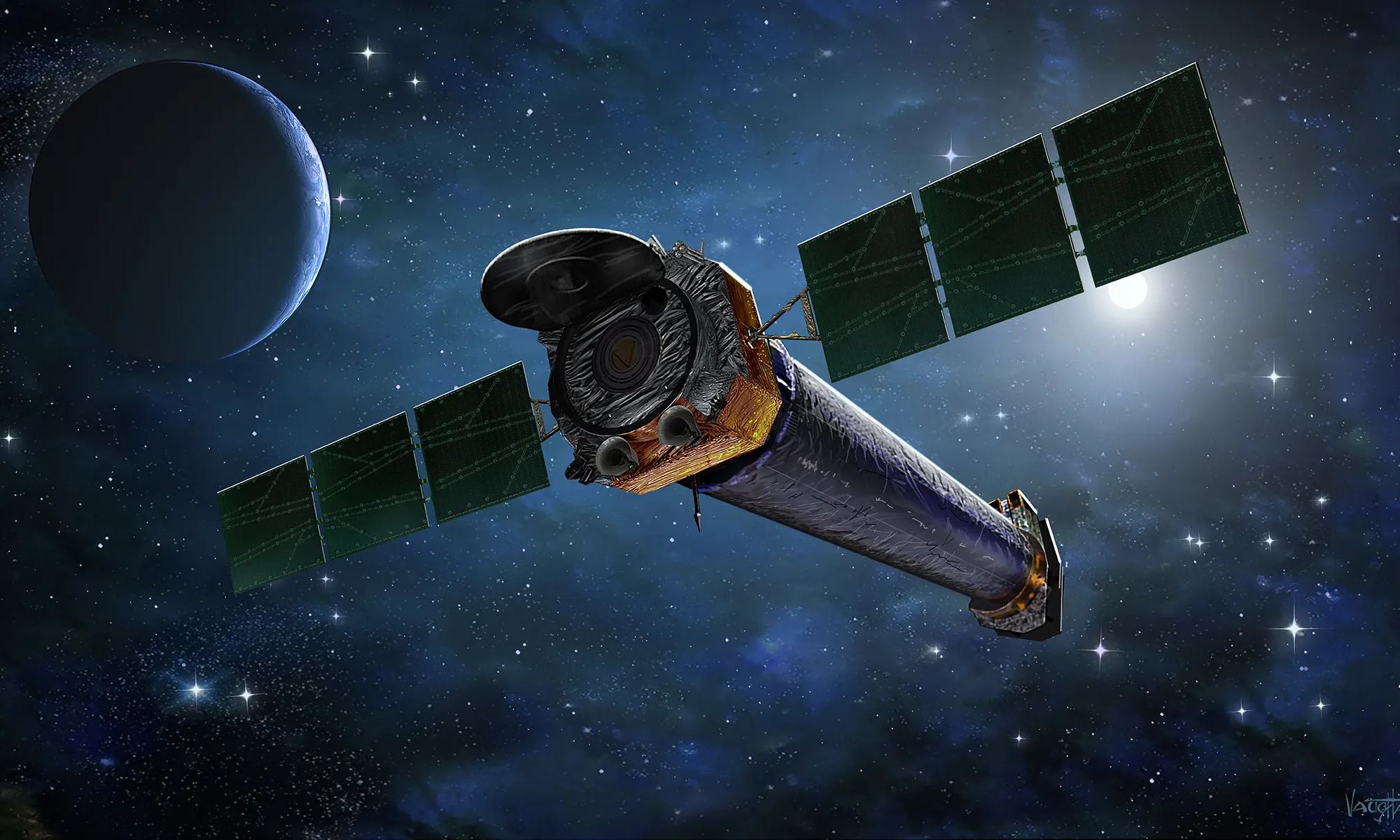The US Government budget announcement in March left NASA with two billion dollars less than it asked for. The weeks that followed have left NASA with some difficult decisions forcing cuts across the agency. There will be a number of cuts across the agency but one recent decision came as quite a shock to the scientific community. NASA have just announced they are no longer going to support the Chandra X-Ray Observatory which has been operational since 1999 and made countless discoveries.
Chandra was launched back in 1999 and has become pivotal in the world of X-ray astronomy. X-ray observatories like Chandra have to be placed in orbit because the atmosphere blocks the X-ray radiation from reaching Earth. Like other high energy telescopes, the mirrors of Chandra have to be placed at shallow angles to the incoming high energy beams. If they were placed perpendicular the X-rays would zip straight through. Instead, multiple mirrors are placed at shallow angles to gently guide the radiation to a focus.
Since its launch it has captured high resolution X-ray images of black holes, supernova remnants, pulsars and galaxy clusters. The X-rays allow us to look deep inside these extreme objects to show detail which is usually impossible to see. It’s first image was the supernova remnant Cassiopeia A, it revealed forward and reverse shockwaves and ejecta from the pre-supernova state.

NASAs budget statement was released on 11 March where it revealed its plans for 2025 and beyond. In the statement it read “The reduction to Chandra will start orderly mission drawdown to minimal operations.” Thankfully NASA has already identified a plan of action should Chandra experience mission-ending failure. The loss of funding and the decision to scale back Chandra activity has meant these procedures swing into action. They include the closedown of flight operations, finalisation of data and source catalog, documentation of calibration and other critical products and much more.
The budget document went on with the rationale for the decision “The Chandra spacecraft has been degrading over its mission lifetime to the extent that several systems require active management to keep temperatures within acceptable ranges for spacecraft operations. This makes scheduling and the post processing of data more complex, increasing mission management costs beyond what NASA can currently afford.”
The statement refers to spacecraft degradation which does of course come to all spacecraft in time if not repaired and upgraded. One of the key issues it temperature control. To be effective Chandra needs to be kept at a specific temperature but since 2005 the temperature has been increasing. To overcome the problem, thermal models have been developed along with processes to counteract the rising temperature with no degradation in quality. However to continue operations the models need to be updated which takes time and money.
In April, NASA plans to go through a review process to see if operations may be able to continue in the future given the budget restrictions. For now though, it seems Chandra operations are set to be put on hold for the foreseeable future.
Source : A Letter to the Chandra Community


Sad to see, perhaps time for a new replacement a like Hubble.
It happens that I discovered astronomy a couple of weeks before Chandra launched, so this mission has a special place in my heart. If it’s really over, 25 years is an incredible innings whichever way you slice it. Such a bummer that it comes down to ground operations rather than a critical failure of the spacecraft itself. These expensive operations sound ripe for automation by AI…
This is resource waste, since there isn’t any similar capable observatory to replace it in a long time. The addition of Webb has mean that they have formed a tag team working relationship, especially useful to probe Webb’s quasar discoveries, so it may be at its top productivity. For example:
“By combining data from NASA’s Chandra X-ray Observatory and NASA’s James Webb Space Telescope, a team of researchers was able to find the telltale signature of a growing black hole just 470 million years after the big bang.”
[Lee Mohon, NASA, NOV 06 2023]
Hopefully astronomers can accumulate enough political support to reverse the decision!
“Astronomers are up in arms over the announcement. They argue that the telescope is as productive as ever and remains a cornerstone of U.S. high-energy astrophysics. Its loss would be an “extinction-level event” for x-ray astronomy in the United States, according to a “SaveChandra” website set up to lobby for the mission.
“I’m horrified by the prospect of Chandra being shut down prematurely,” says x-ray astronomer Andrew Fabian of the University of Cambridge, who has been involved with the observatory from before its launch in 1999. “If you start doing deep cuts so abruptly you will lose a whole generation” of x-ray astronomers, says Elisa Costantini of the Netherlands Institute for Space Research, who has worked with Chandra data since its launch. It will leave “a hole in our knowledge” of high-energy astrophysics, she says.”
[DANIEL CLERY, Science, 18 MAR 2024]
“The addition of Webb has mean” – has meant. FWIW I amended that part of the text as I went to SaveChandra and used it as my personal context when signing the communal letter of support.
#SaveChandra